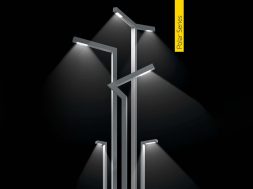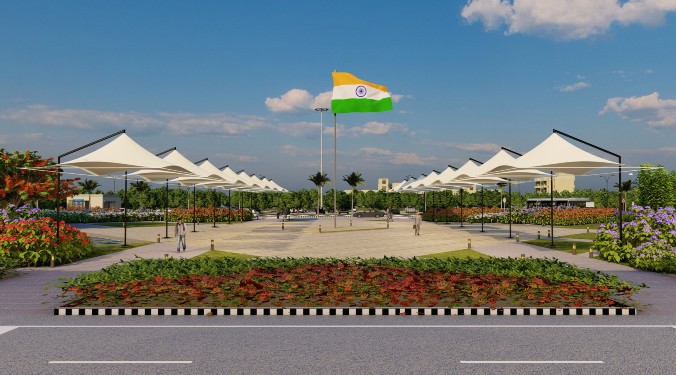
With the recent influx of façade and window consultants growing in the country, we are positive that the industry will mature, and quality will prevail over cheap stick run of the mill products.
Ashim Chugh, Director, LGF Sysmac India Pvt Ltd
What’s your take on the performance of fenestration industry in India?
As of now there is a big potential as far as real estate growth is concerned and with the concept of smart cities launched by the Prime Minister of India, all industries linked to the real estate ecosystem will receive a boost. Furthermore, estimates by the Planning Commission of India suggest that there are 20 million new houses to be built in the next 10 years. So, if we consider a decade long horizon, the fenestration industry will witness a phenomenal growth. At this moment, there’s no doubt that the sector has hit a slowdown which is temporary. Remember that real estate capex accounts for 10-15 percent of the Indian GDP and that over the past 10 years, one in three non-agri jobs in India has come from this sector. We can’t really instil growth without taking on certain infrastructure and development projects. But in due course, when the initiatives taken by the government pick up momentum, the real estate sector is going to bounce back. And when that happens, there’s going to be a significant uptick in the fenestration industry as well.
Can you give us segment-wise break-ups for different kind of fenestration solutions namely aluminium, wood, steel and uPVC windows?
As of now aluminium takes a chunk of business which is close to 45 per cent followed by wood at about 25 per cent. Finally, both steel and UPVC hold a 15 per cent market share each. As far as UPVC is concerned, we have seen an influx in the last seven years. We think it started off in a big way in India and has picked up at a fast pace. Extrusion companies have also set up base in India for extruding UPVC profiles whereas aluminium and wood have always remained the dominant materials for the fenestration industry until date.
What are the challenges faced by the industry?
I think the biggest challenge is a lack of standardisation of doors and windows. The sector is pretty unorganised so there are not enough standards for architectural hardware. Every building has the liberty to incorporate a window or door system implying no control on the performance, durability and efficiency of the door or window so installed. With the recent influx of façade and window consultants growing in the country, we are positive that the industry will mature, and quality will prevail over cheap stick run of the mill products. One of the biggest shortcomings of our industry is that the specifications that go on the design blueprints generally do not make it, as is, to the construction phase. So, for suppliers, it’s impossible to go into mass production till the construction of a project actually commences. This has a crippling effect on everyone because despite the limitations imposed by lack of standardisation, we have a task to deliver on time. LGF SYSMAC is addressing this challenge head on with a PAN India sales and distribution network ensuring product availability and delivery on an immediate basis.
There have been ongoing deliberations on the comparisons between uPVC and aluminium in terms of strength, performance, cost–effectiveness and eco-friendliness. What is your take on this?
India has a warm climate for most of the time of the year, therefore it is understandable why aluminium has been the preferred and significant contributor to the fenestration industry over the years. Nonetheless, upvc has made a steady start in India and upvc doors and windows are able to reduce energy loss upto 90 per cent. Aluminium doors and windows on the other hand are light weight and are weather resistant. Thermal break aluminium windows can reduce energy loss to a large extent. Moreover, aluminium windows have the option of colours (powder coating oranodosing) which is economical and easy as compared to foiling in upvc. The introduction of architectural paints for upvc is an upcoming phenomenon which will not only give many options and effects of colouring in upvc, it will also be economical as compared to powder coating in aluminium. As of now aluminium windows are considered the more economical option compared to upvc windows.
Where do you see the fenestration business in India heading by 2020?
The scope is huge. My only take for this is that the sooner we bring in regulations for standardising doors and windows in India, the better it will be for the industry as well as for the end consumers. At the end of the day,the person who is actually moving into a new home or premise needs to be comfortable in operating and getting the sustainable value of the doors and windows so installed. End consumers have put in their hard-earned money buying a new house and it is expected that the doors and windows so installed are durable and nuance free. Delivering high quality products will be possible once standardisation and regulations are set for manufacturing. I only hope that this happens soon. Moreover,with our GDP growing at over 7 per cent per annum and development projects being put into motion by the government, I think the fenestration industry has no dearth of growth in the next five years.
Cookie Consent
We use cookies to personalize your experience. By continuing to visit this website you agree to our Terms & Conditions, Privacy Policy and Cookie Policy.









